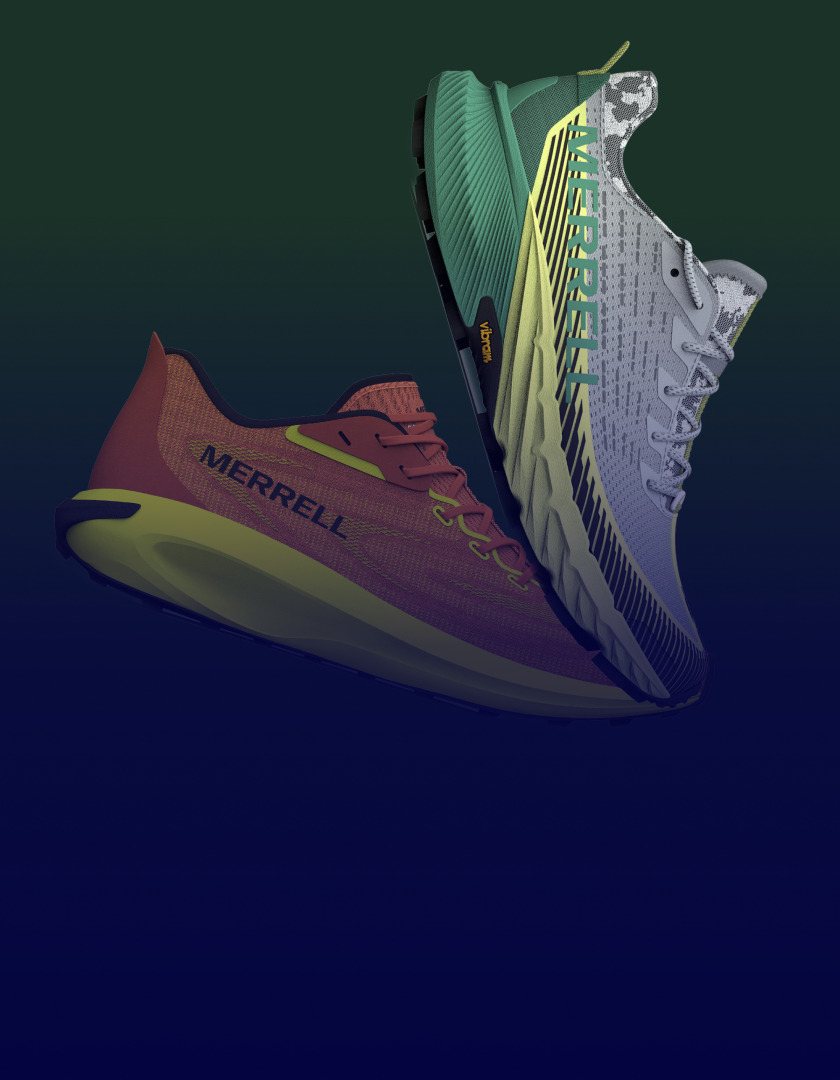PIM vs DAM

Every year, thousands of brands and retailers launch new products—yet most will never turn a profit.
In fact, Harvard Business School professor Clayton Christensen estimates that 95% of the roughly 30,000 consumer products launched each year will be considered a failure.
In their Harvard Business Review breakdown of why most launches fail, product consulting experts Joan Schneider and Julie Hall point to when a company’s “website is the primary place to order, but the product description is unclear and the site isn’t fully functional.”
In theory, a product’s description and web page functionality should be a no-brainer. A product should be easy to describe and all the information and media—photos, videos, instructions—should be accurate, comprehensive, consistent and up-to-date.
But that’s not always the case. Every year, brands lose millions in revenue thanks to incomplete product information, poor quality digital assets and an inferior customer experience across different channels and platforms.
When that happens, brands and retailers may ask what’s to blame: is the problem poor product information management (PIM), inadequate digital asset management (DAM)—or both?
In today’s multi-touch, omnichannel commerce landscape, managing product information and digital assets effectively is essential for survival and growth. But understanding which systems you need and how they work together can be confusing.
In this guide, we break down PIM and DAM systems by explaining what they are, how they differ, when you need one or both and how they work together to transform customer experiences.
What is PIM?
Product information management (PIM) is a system that serves as a central hub for collecting, managing, enriching and distributing product information across all sales and marketing channels, from e-commerce websites to mobile apps and third-party shopping networks.
Think of PIM as your product data’s single source of truth, where technical specifications, marketing descriptions, pricing, categorization and other attributes are stored, managed and prepared for distribution to online and offline channels.
The key capabilities of PIM solutions include:
- Centralization: PIM creates an end-to-end repository for all product information, accessible to all stakeholders and teams.
- Multi-channel distribution: PIM syndicates consistent product information to all sales and marketing channels, ensuring customers receive the same information regardless of where they shop.
- Data quality control: PIM validates product information against business rules, ensuring completeness, consistency and accuracy.
- Classification: PIM organizes products into logical hierarchies and taxonomies for improved navigation and discoverability.
- Workflow management: PIM automates and streamlines the process of collecting, validating, enriching and approving product information
- Localization and personalization: PIM manages translations and adaptations for different markets, regions and customer segments.
- Integration and scalability: PIM seamlessly integrates with other business systems such as ERP, CRM, PLM, DAM and e-commerce platforms, enabling scalable and flexible data management as the business grows.
At its most basic level, PIM empowers brands to unify, manage, improve and syndicate product data from a single platform—focusing on consistency, accuracy and data unity across all touchpoints.
What is DAM?
Where PIM manages and distributes any type of product information, digital asset management (DAM) focuses on an organizations’ digital files like images, videos, documents, audio files and other multimedia content pieces.
Just as PIM manages product information, DAM manages all the visual and media elements that bring products to life. It’s where marketing teams store, organize and distribute on-brand product photos, instructional videos, 360-degree views, user manuals and other digital content that customers interact with.
Even a few years ago, digital assets may not have been as crucial to product success as they are now. Today’s consumers are more educated than ever and have higher expectations of brands when it comes to presenting helpful media content.
A 2023 EMARKETER report found that 23% of surveyed consumers research products online before buying in person, meaning high-quality media assets like photos and videos often shape the initial buying decision.
With emerging trends like video commerce, augmented reality (AR) and interactive content on the rise, DAM’s role is more critical than ever in driving engagement and conversion.
Core features of a DAM solution are:
- Asset storage & organization: DAM centralizes digital files in a structured repository with folders, collections and categories.
- Advanced search: DAM enables the easy locating of assets through metadata, tags and AI-powered image recognition.
- Metadata management: DAM adds descriptive information to assets, making them searchable and usable in the right context.
- Version control: DAM can track changes and maintain a history of asset versions, ensuring teams use the most current files.
- Rights management: DAM manages usage rights, expiration dates and licensing information to prevent copyright issues.
- Usage analytics: DAM can measure how, where and when assets are being used for optimization and ROI assessment.
- Distribution: DAM facilitates sharing assets across channels with appropriate sizing, formatting and delivery methods.
Written product information plays its role in promoting products, to be sure, but powerful visual and digital assets are just as important—and sometimes even more so—when it comes to engaging customers on various channels.
Brands with highly visual products, like those in fashion and apparel industries or cosmetics and personal care markets, rely heavily on DAM to showcase their products effectively, complementing the vital role of PIM in overall product success.
What are the key differences between PIM and DAM?
While PIM and DAM solutions both play important roles in managing product content across channels, they each serve fundamentally different purposes and handle distinct types of information.
Understanding these differences is key to implementing the right solution for your brand’s needs and goals.
Here’s a quick breakdown of the differences between PIM and DAM as it relates to content, functions, users and workflows.
Types of Product Content
- PIM: Primarily manages structured textual and numerical product data—specifications, features, pricing, SKUs, dimensions, materials and other attribute-driven information.
- DAM: Focuses on unstructured digital media files—images, videos, PDFs, audio files, 3D models and other rich media.
Primary Functions
- PIM: Centralizes, manages, enriches and syndicates product information to ensure accuracy, consistency and optimization across sales and marketing channels.
- DAM: Organizes, stores, retrieves and distributes digital assets with proper versioning and rights management.
Primary Users
- PIM: Primarily used by product managers, merchandisers, category managers, e-commerce teams and data stewards.
- DAM: Most heavily utilized by creative teams, marketers, content producers and brand managers.
Key Functions
- PIM: Product data centralization and management; data validation and quality rules; categorization and relationships; bulk editing and import/export tools; multi-channel syndication; attribute management; product family/variant management; advanced analytics.
- DAM: Asset tagging and metadata management; asset enrichment; version control and rights management; format conversion and rendition generation; creative workflow management; brand consistency enforcement.
Workflow Focus
- PIM: Optimized for the product information lifecycle—from data collection to syndication.
- DAM: Designed for the digital asset lifecycle—from creation to distribution and archiving.
Analytics and Reporting
- PIM: Tracks product data completeness, quality and channel readiness in general.
- DAM: Measures digital asset usage, performance and ROI across channels.
Integrations
- PIM: Typically integrates with ERP and PLM systems, e-commerce platforms, marketplaces and print catalog systems.
- DAM: Often connects with creative tools (Adobe Creative Cloud), CMS platforms, social media management tools and email marketing systems.
On paper, these differences may seem significant, but as omnichannel shopping becomes more complex, the lines between PIM and DAM are often blurred—and in many cases, they overlap into one integrated approach to product information success.
When Do You Need PIM, DAM or Both?
Choosing between implementing a PIM system, a DAM system or both depends on your organization’s specific challenges, goals and scale of operations.
Here’s a high-level framework to help you determine which solutions might be right for your brand.
When You Need PIM
A PIM software solution may be an ideal fit if:
- Your product catalog is large or growing rapidly: Managing hundreds or thousands of products with complex specifications across multiple channels becomes unmanageable with spreadsheets or basic e-commerce platforms.
- You sell through multiple channels: Maintaining consistent product information across your website, marketplaces like Amazon, retail partners and other sales channels requires centralized management.
- Your product information changes frequently: Regular updates to pricing, specifications or seasonal variations demand a system that can efficiently propagate changes across all channels.
- You operate in multiple markets: Managing translated product content and market-specific attributes necessitates a structured approach to localization.
- You’re experiencing data quality issues: Inconsistent product descriptions, missing attributes or outdated information causing customer confusion signals the need for a PIM solution.
When You Need DAM
DAM, on the other hand, might work best if:
- You manage a large volume of digital assets: When your organization works with thousands of images, videos and other media files, finding and managing them becomes challenging without a dedicated system.
- Your visual and digital brand consistency is critical: Ensuring all visual elements adhere to brand guidelines across channels requires centralized asset management.
- Multiple teams create or use digital assets: Collaboration between in-house teams, agencies and partners necessitates a shared repository with proper access controls.
- You need to track digital asset usage rights: Managing licenses, usage permissions and expiration dates for digital content is essential to avoid compliance issues.
- Your creative workflow needs optimization: If production bottlenecks or version control problems are slowing down your creative process, a DAM can streamline these workflows.
When You Need Both
Finally, you may need features of both PIM and DAM systems if:
- You’re committed to omnichannel excellence: Delivering consistent, compelling customer experiences across all touchpoints requires both structured product data and rich digital assets working in harmony.
- You’re scaling your product catalog and channels: Growth in both products and channels creates complexity that’s best managed with specialized systems working together.
- Rich product experiences are central to your strategy: If detailed product information combined with high-quality visuals drives your customer engagement approach, an integrated PIM-DAM strategy is ideal.
- You must ensure governance and compliance: Managing product and asset data in tandem enables regulatory adherence, especially with emerging requirements like digital product passports (DPPs).
- You have complex manufacturing or supply chain operations: Organizations with intricate supply chains benefit from systems that can manage both technical product data and associated documentation.
- You’re investing in personalization: Tailoring product experiences to different customer segments requires sophisticated management of both information and assets.
Choosing between PIM and DAM—or working with both—ultimately comes down to your brand’s goals, pain points and products.
In many cases, integrating both systems into a comprehensive, end-to-end solution is the best way to improve the likelihood that your customers will have an engaging, positive experience no matter where they meet your brand.
How Do PIM and DAM Work Together?
When PIM and DAM systems operate in silos, organizations often experience inefficiencies, inconsistent data, duplicate efforts and missed opportunities.
But when integrated effectively, these systems create a powerful engine for delivering exceptional product experiences at scale.
Here’s how they work together to maximize impact and drive revenue growth.
Better Asset-to-Product Relationships
Integration connects product records in PIM systems with their associated digital assets in a DAM solution.
This relationship ensures that when a product is published on any channel, it automatically pulls the correct and approved images and videos.
Shared Product Data and Taxonomy
Integrated PIM and DAM systems can share classification frameworks, allowing teams to use consistent terminology when organizing both product information and media assets.
This can also accelerate overall product categorization and classification.
Unified Workflow Management
Advanced integrations coordinate workflows between systems, so that product launches synchronize content and asset readiness across teams.
Centralized Search and Discovery
Integration allows users to search across both systems, finding all product information and related assets without switching contexts.
Real-World Integration
What does all that look like in a real-world commerce setting?
Let’s say a fashion retailer introduces a new apparel collection. PIM manages technical specifications, pricing and general product descriptions, while DAM handles campaign images, videos and lookbooks.
By integrating PIM and DAM, the retailer ensures that when the collection goes live, each product displays accurate, season-specific imagery across all channels.
As another example, a manufacturing company can leverage PIM-DAM integration to streamline how technical documentation gets associated with products.
Engineers upload technical drawings, manuals and CAD files to the DAM, which automatically connects them to corresponding SKUs in the PIM based on matching product codes.
Finally, for a brand selling through both its own website and Amazon, PIM-DAM integration can ensure each channel receives appropriately formatted images—white background for Amazon, lifestyle images for their brand site—along with channel-optimized product descriptions.
How PIM and DAM can Transform Customer Experiences
Not only does this integration streamline the workflows behind the products, but it also provides an enhanced front-end shopping experience for the customer.
Here’s how.
Consistency Across Channels
Integrated PIM-DAM systems ensure that whether a customer is browsing on mobile, desktop, in-store kiosk or print catalog, they see the same high-quality images, videos, specifications and descriptions.
Enhanced Product Discovery
Rich product attributes from the PIM combined with comprehensive visual assets from the DAM improve search relevance and filtering capabilities, enabling customers discover exactly what they need.
Informed Purchase Decisions
Comprehensive product details paired with high-quality images, videos, 360° views and comparison charts give customers confidence in their purchase decisions, no matter what stage of the customer funnel they’re in.
Highly Personalized Experiences
PIM-DAM capabilities enable contextual presentation of products, showing different images, videos and information based on customer preferences, geography or shopping history.
Easy Multi-touch Journeys
Integrated product data solutions make it easier for customers to research on mobile, check inventory in-store and complete a purchase online without encountering inconsistencies or friction.
These enhanced shopping transformations enable brands and retailers to move beyond simply managing product information and digital assets—to creating compelling customer journeys that drive long-term loyalty and growth.
Transform Product Content into Exceptional Experiences
Leading brands know that delivering superior customer experiences means leveraging the power of both PIM and DAM into one unified product strategy. With Centric PXM™, managing every type of product content becomes simpler than ever, enabling you to build a streamlined, accurate and consistent workflow.
Our agile, end-to-end solution brings the best of PIM and DAM into a single, integrated platform that turns your product information and media into a powerful growth engine. From centralizing data to improving enrichment and distribution across every channel, Centric PXM enables brands turn basic product data into transformative shopping experiences.
Request a demo of Centric PXM today to see how our unified platform can transform your product data into engaging, efficient customer experiences that convert—no matter where your brand is found.
Request a Demo Today!


 Centric Pricing & Inventory
Centric Pricing & Inventory
 Centric Market Intelligence
Centric Market Intelligence
 Centric PXM
Centric PXM






